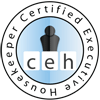Portable electric air cleaners come in a variety of sizes, functions and prices. Most are equipped with a fan for moving indoor air through the machine.
Some air cleaners combine several of these functions.
Try the following steps before spending hundreds of dollars on air-cleaning equipment:
- Try to eliminate the problem at its source. Clean your home well to eliminate unpleasant odors, using disinfectant or a steam vapor system where appropriate. If tobacco smoke is the problem, insist that smokers enjoy cigarettes, cigars and pipes outdoors. Use a vacuum cleaner that captures dust rather than blowing it into the air.
- Employ ventilation for temporary but recurring odors, moisture or vapors, such as those caused by cooking or bathing. Always use an exhaust fan during and shortly after boiling water, frying or cooking in the kitchen, or running lots of hot water in the bathroom. Cut down on airborne grease and excessive humidity, and you’ll reduce the need for surface cleaning and mold and mildew removal.
Air cleaners are at best only a temporary fix for certain persistent odors, such as those caused by mold or mildew. You may need to consult a specialist to resolve odor caused by these fungi, which frequently remain completely hidden until the problem is severe; especially if your home has been flooded or experienced a slow plumbing leak.
Airborne gases
According to the U.S. Environmental Protection Agency (EPA):
"Cleaners that do not contain special media, such as activated carbon or alumina, will not remove gaseous pollutants, including radon, or reduce their associated health effects."
Also some electronic and ionic air cleaners release excessive amounts of ozone — in effect producing their own gaseous pollution — according to consumer-products experts. Ozone is hazardous to people with breathing difficulties such as asthma, and it can damage indoor materials such as paint, carpet and upholstery.
Volume of air
The effectiveness of air cleaners should also be measured by how much air they actually process. The more air they are able to clean (known as the Clean Air Delivery Rate or CADR) the more likely they will be able to keep air in your home acceptably clean.
Final notes
If you buy an air cleaner, clean the unit regularly to keep it working at best efficiency. The owner’s manual or manufacturer’s Web site are the best sources of information for cleaning your air cleaner properly.









